Do You Have To Bake Egg Shells Before Using In Garden

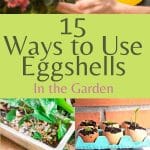
Got eggs? Then you've got eggshells. And if you've got eggshells, you have an excellent free and natural gardening resource.

Jump to:
- Why Use Eggshells in the Garden?
- How To Prepare Eggshells for Garden Uses
- Start Seeds in Eggshells
- Use Eggshells to Improve Container Drainage
- Supplement Bird Feed with Eggshells
- Use Eggshells to Clean Up Garden Tools and Supplies
- Eggshells to Improve Soil Aeration
- Using Eggshells to Prevent Blossom End Rot
- Eggshells Make a Great Compost Component
- Eggshells as Plant Fertilizer
- Use Eggshells to Increase Soil pH
- Eggshell Pest Control
- Deter Problem Pets and Wildlife
- Eggshell Home Remedy for Itchy, Irritated "Garden Skin"
There are a number of ways that eggshells can be put to good use in the garden. Use eggs shells to:
- Start seedlings
- Improve container drainage
- Supplement bird feed
- Clean tools and supplies
- Improve soil aeration
- Prevent blossom end rot
- Build compost
- Balance vermiculture
- Fertilize plants
- Make a foliar spray
- Increase soil pH
- Control pests
- Deter cats
- Repel deer
- Relieve skin irritations
Let's take a look at the why and the how of using eggshells in the garden.
Why Use Eggshells in the Garden?
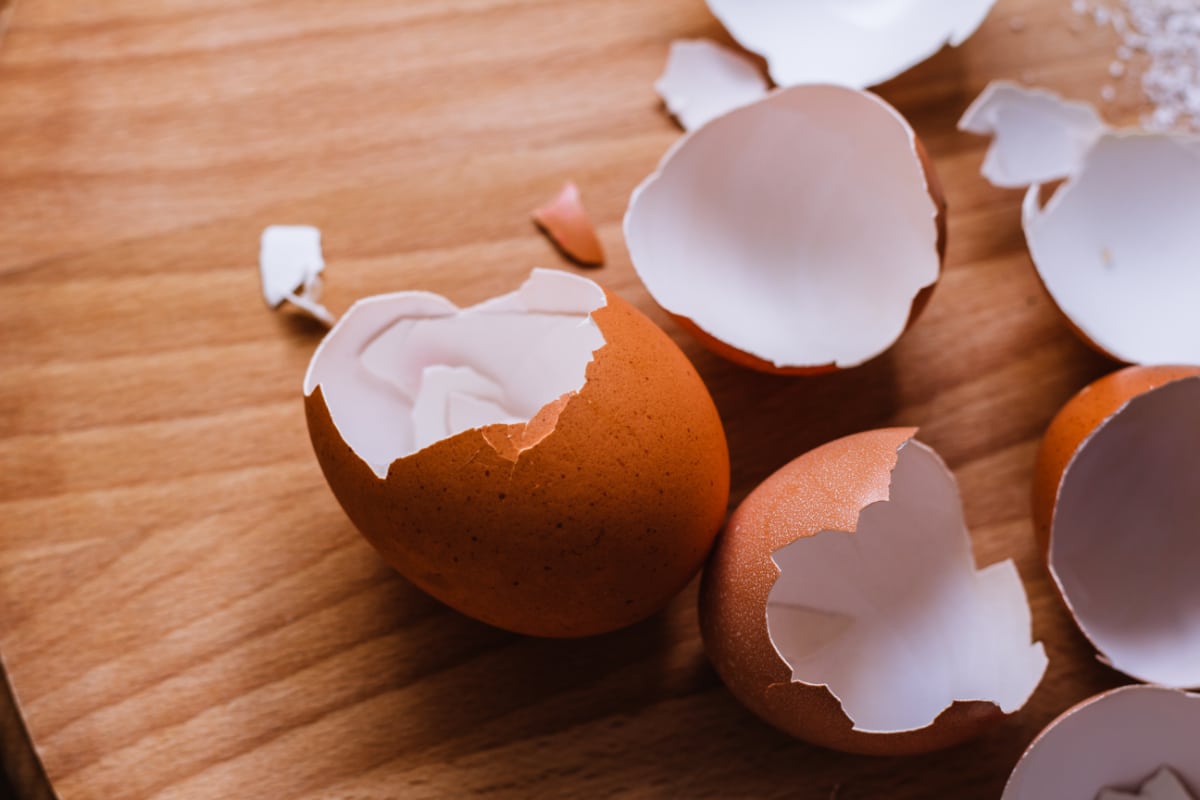
Eggshells are obviously all-natural, which is the first and foremost reason you'd want to use them in the garden. They are made up primarily of calcium; or more accurately, calcium carbonate. Calcium is crucial to plant life. It is something of a building block for cell growth, much as it is for us humans. Without it, or without enough of it, we see signs of struggle in plants—deformation and disease.
Eggshells are one way to naturally enhance the calcium content of your plants and soils. In addition, there are several applications that make good use of what would otherwise be just one more thing to throw away. It only makes sense to maximize the use of your eggshells, and up your garden game in the process.
How To Prepare Eggshells for Garden Uses

You'll want a sizable quantity of eggshells to use in your garden, but they are easy to save and easy to prep for use.
Any time you use eggs to cook or bake, just save the shells. For most purposes (and definitely if you'll be keeping them in your kitchen for an amount of time before using them), you'll want to clean the eggshells right away.
To clean the eggshells, just give them a quick rinse. Let them dry—you can lay them out on newspaper to air dry—then put them in a bowl or container to store them until you have enough to use. If you have many shells and you want to use them more quickly, you can dry them in a low oven, then cool and store them.
You'll be using crushed eggshells, for the most part, so to save space, go ahead and crush the shells down and just keep adding to your container or bowl.
How much you crush the shells will depend on what you are using them for. There are a few uses for which large half-shell pieces should be used. The uses outlined here will detail how large or fine the shells should be for each purpose.
Crushing the shells is easy. You can use your hands, a rolling pin with eggshells placed in a plastic zipper bag, a mortar and pestle, a kitchen hammer (such as a meat tenderizing hammer), or anything you have that gets the job done.
For very small crushed shells and to make a crushed eggshell powder, the best tool for the job is your kitchen blender. Some people use a food processor, too. There is no need to go out and buy fancy equipment—whatever you have that works is the right tool for the job.
Start Seeds in Eggshells
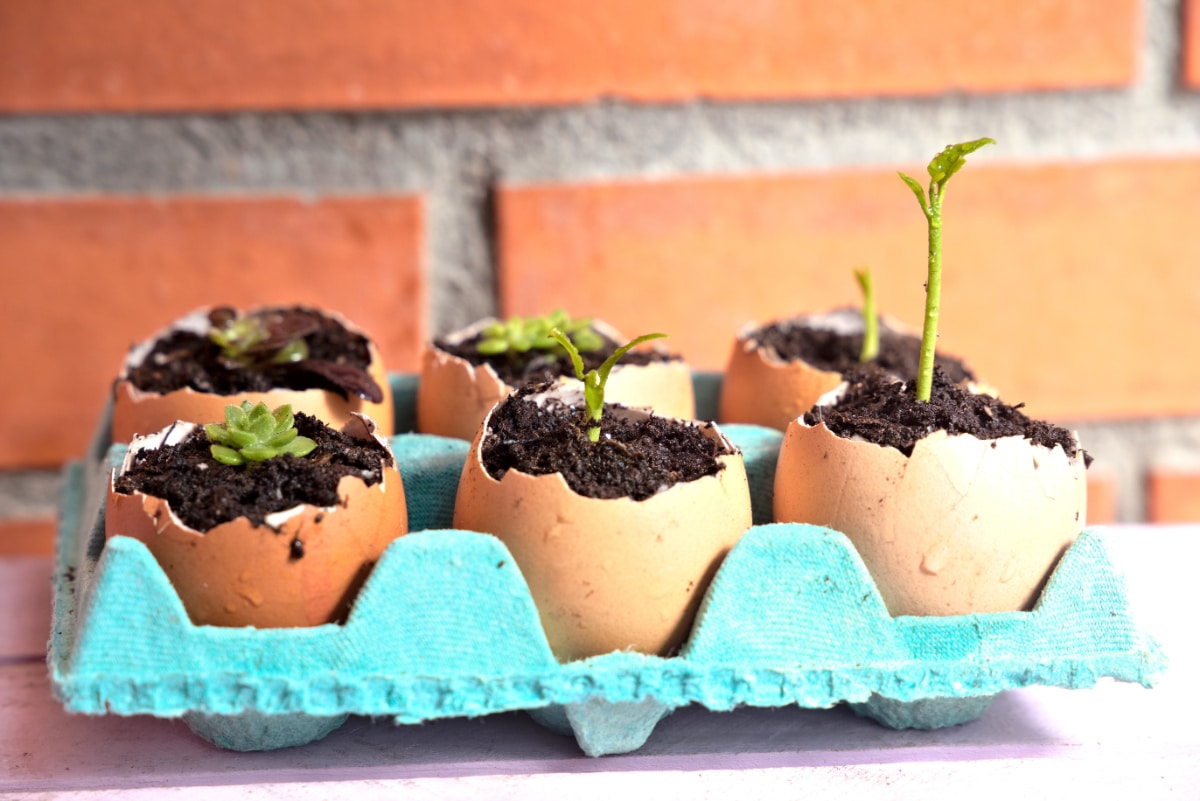
One of the first uses for eggshells in gardening is to use them to start seeds. Eggshells are free, biodegradable, and can be planted directly in the ground or in larger pots, making them excellent seed starters.
You should save the egg carton as well as the eggshells for this project.
To start seeds in eggshells, use the largest shell portions that you have. These should be at least one-half of a shell each, larger if you have them. Use something like a nail, ice pick, or an awl to make a drainage hole in the bottom. About one-quarter inch will do.
Fill each shell with a quality potting medium, preferably one that does not contain a lot of large pieces and bark or wood chips. Plant one or two seeds per shell (you can pinch off and thin the weaker seedling after the seeds have established). Plant them to the depth indicated on the seed packet. Set potted shells into the bottom of the egg carton.
The one drawback to using eggshells as seed starters is that they are on the small side. You may need to "pot up" or "pot on" your seedlings at a later date so that they continue to have enough room to grow. Potting up, while an extra step, has its benefits—mainly good root growth and the ability to correct for early issues like legginess. Once seedlings are larger than two times as high and two times as wide as the eggshell, they should either be potted up or planted in the ground (if the weather and conditions are right).
Seed starting in eggshells is a good choice for seedlings that do not like to have their roots disturbed for planting or potting up. Pumpkins, squashes, sunflowers, morning glories, and many other vining plants fall into this category. These fast-growing seedlings also do not need a long period of starting ahead of planting outside (four weeks is usually enough). Given that they will live only a short time in their pots, prefer a pot that can be planted directly without a lot of disturbance, and don't need the room to remain in the pots for a very long time, eggshell planting can be a good choice for these types of plants.
Either way, seedlings that are started in eggshells will be easy to pot up and/or to plant directly in the ground.
To plant, you will need to break or crack through the shell to allow roots to expand and grow. A good squeeze of the hand should do the trick; just be sure to crack all the way through to give the seedling's roots an outlet, then plant the entire shell and root ball directly into your next pot, garden container, or ground. Planting this way can help reduce transplant shock caused by root disturbances.
Use Eggshells to Improve Container Drainage

Good drainage is essential for container gardens and potted plants of any kind. Eggshells are a good dual-purpose way to achieve that. They will help improve circulation and airflow to roots, too, which is also essential for nutrient uptake.
Crush eggshells but leave them on the large, coarse side. Line the bottom of your pot or container with the crushed shells. A depth of an inch is a good rule of thumb, but this will also be relative to the size of your pot. Large containers will benefit from two to three inches or more of drainage material. Small pots might only need one-quarter to half an inch. Use your judgment. The important part is to provide good flow for excess moisture and a reservoir where water can go for those pots that do not have drainage holes.
Eggshells make good drainage material because they are bulky but lightweight and when they do break down, they feed essential minerals back into the soil. Use fresh eggshells in your gardening containers each year and replace the eggshells any time you repot your plants.
Supplement Bird Feed with Eggshells
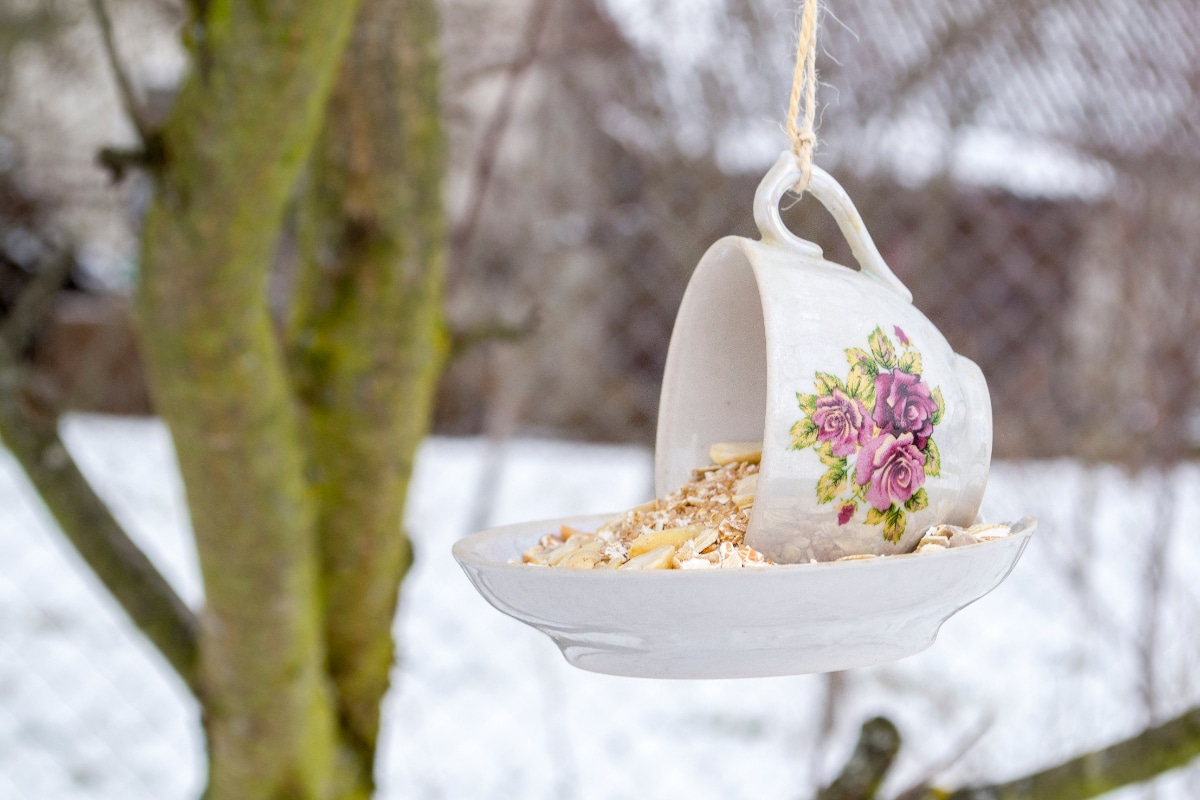
Cleaned, crushed eggshells are a good feed supplement for any types of birds (including, if you have them, backyard chickens—it's a myth that this makes them eat their eggs because calcium deficiency is what makes birds eat eggs, and cleaned crushed eggshells don't look like eggs to chickens anyway). Crushed eggshells provide critical calcium, along with some other important trace minerals.
Feeding prepared eggshells to birds is especially helpful in the spring. This is when female birds use more calcium for egg-laying. This also times well with birds migrating back and selecting their nesting sites. You can use this to your advantage to invite more bug-eating birds to nest near your garden. This is one way to keep a good balance between harmful and beneficial insects and wildlife.
Eggshells that you provide as a bird food source should be sterilized first. This can be done easily by drying your eggs in a 225-250F oven for 15 minutes. Cool and crush the eggshells into small pieces (about one-eighth of an inch is a good size).
To feed, you can mix the eggshells into any birdseed mix or scatter them over the surface of the garden for birds to forage.
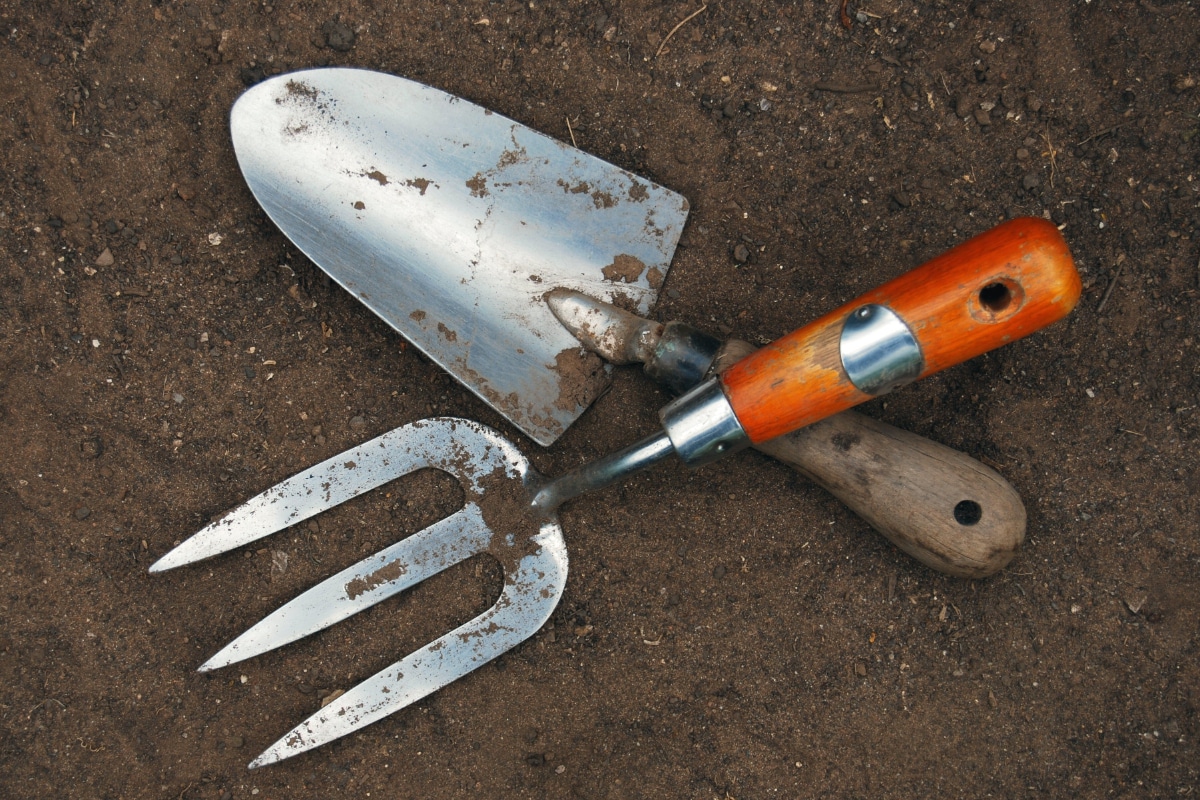
Crushed eggshells are mildly abrasive. They are a natural way to tackle mineral deposits, hardened dirt, and grime. Use them to clean planting containers, pots, garden tools, birdbaths, potting surfaces…just about any surface you feel can withstand a bit of abrasion and needs something a little tougher to do the job. Following are two good recipes to make with eggshells for cleaning in and around the garden or potting shed.
Simple Soap and Shell Cleaner
Mix clean, finely-crushed eggshells into a dish of warm soapy water. Use this for any stubborn scrubbing task. For hard-to-reach bottles and containers, leave the eggshells a little coarse, pour the mixture into the bottle, and shake to clean. This helps to remove stains (including those in your gardening coffee-to-go cup!).
Heavy-Duty Eggshell Garden Cleaner
For some real natural cleaning power, put your eggshells to use with some baking soda and vinegar—two kitchen staples that also have big uses in the yard and garden, and are highly effective garden cleaners on their own.
- Collect one dozen eggshells. Clean them and then dry them in a 225F oven for 15 minutes or until dry.
- Let cool, then blend them into a fine powder. Your kitchen blender is likely your best tool for this.
- Pour the powdered eggshells into a one-quart bowl or storage container (preferably one with a lid). Add three cups of baking soda and mix or shake until evenly combined.
- To use, mix the powder with a small amount of water or vinegar (vinegar for more cleaning, grime and stain breakdown, and shine). The paste can be any consistency you need for the job at hand.
- Use the paste to scrub away mold, mildew, grime, and buildup. You can also leave the paste on surfaces for 20 to 30 minutes to break down tough dirt, oils, and stains.
- Rinse clean and use.
This cleaner is safe for birds and wildlife and safe to use on pots and containers that will be used for growing vegetables, fruit, herbs, and food plants. Avoid using this cleaner or rinsing into areas where plants are growing. The baking soda and vinegar may kill plants and grasses that it comes into contact with when used in high concentrations.
Eggshells to Improve Soil Aeration
This is a very simple but effective use of eggshells in the garden.
Mix small to coarse-ground eggshells into any garden soil or container garden soil to improve airflow in the soil. This is especially helpful in hard-packing soils. It is a useful trick for container gardening where even good soils can become compacted over time and with repeated watering. The eggshells also work to improve water flow and drainage through the soil.
Good airflow and oxygen delivery are imperative to root health and nutrient delivery, so anything you can do to improve that will be a benefit to your plants.
Using Eggshells to Prevent Blossom End Rot

One of the main contributors to blossom end rot in tomatoes, squash, and other garden plants, is a lack of calcium available in the soil. And so, it is recommended to apply a calcium source to combat the disease. Eggshells are a popular solution.
While it is true that eggshells are a good source of calcium for gardens, it is not quite as simple as just throwing them around your tomatoes when you see signs of blossom end rot. By the time you experience blossom end rot, it is probably too late to correct the issue for that particular plant or plants, because the fruit is already set. The damage, as they say, is done. The key is to prevent blossom end rot. Eggshells are still good for that; they just need to be applied earlier on.
Eggshells take several months to break down in the soil to a point where calcium is accessible to garden plants. Because of this, it is best to apply eggshells to your soil many months in advance if your goal is to increase available calcium. If you add the eggshells two times per year, you can give your tomatoes (and other plants) the calcium they need to get through many months of growing and production.
- Eggshells used for the prevention of blossom end rot should be finely crushed or ground. The smaller the shells are crushed, the faster the breakdown will be, and the sooner the shells' calcium will become available.
- Mix eggshells into the soil in the fall or at the end of the garden season to build calcium levels up for the following year. This will result in calcium that is readily available at the beginning of the season and through the mid to late garden season.
- Apply more eggshells in the spring or at the time of planting. These will begin to break down and become available in a few months, making them available to replenish the stores of fall-applied eggshells that are now being used up.
- Some people like to place a dose of crushed eggshells in the hole when they plant their tomatoes. This alone will not prevent this year's end rot because it will take too long for the calcium to be usable, but it will help maintain consistent soil levels, replace existing soil stores that are used up, enhance airflow to roots, invite beneficial earthworms, and at any rate, certainly will not hurt.
The key to successful prevention and management of blossom end rot is consistent watering. Calcium deficiency is not the only contributing factor to this disease. Inconsistent watering, which makes calcium and other minerals and nutrients difficult for the plant to take up, are contributing factors as well. It is not only an issue of available calcium but also one of useable calcium. Soil balance and consistent moisture are what make that calcium accessible and usable.
A schedule of twice-yearly applied eggshells for calcium, coupled with consistent watering, will keep your tomatoes in good condition.
Eggshells Make a Great Compost Component
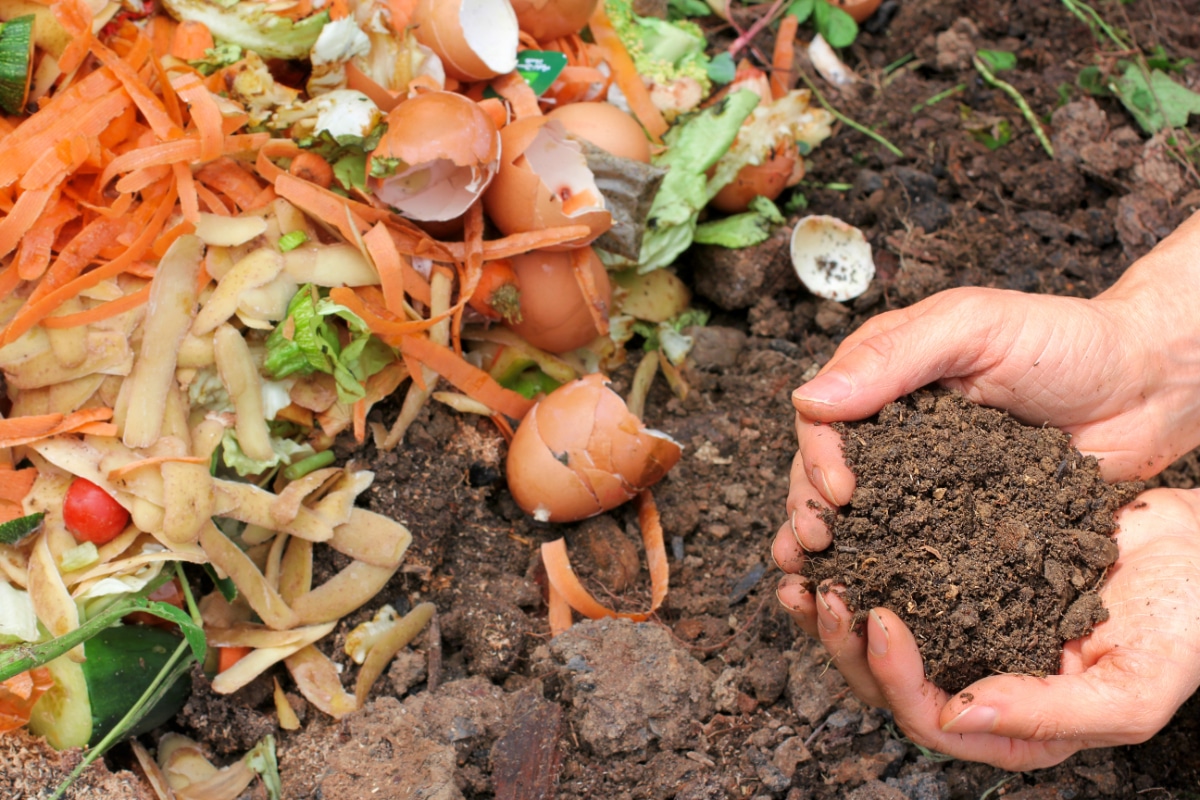
For many of the same reasons that eggshells are useful for combatting soil calcium deficiencies and diseases like blossom end rot, they are excellent additions to the compost pile. Compost is, after all, your future garden soil, so anything that you can do to bolster its nutrient content is a benefit to your garden in the long run. Calcium is important for every one of your garden plants, not just tomatoes, and squash. It is a cell builder that all plants need, so a widespread, available distribution source is certainly a good thing.
The compost heap is a good place to let those eggshells break down because the process of making that calcium and other minerals available (they contain beneficial phosphorous and potassium, too) takes several months—the time it takes compost to break down to a useable resource anyway.
Eggshells fall into the category of "green" materials. They are sources of carbohydrates. You do not have to crush the shells to add them to the compost bin, but doing so will speed their decomposition and their transition into usable minerals. It will also ensure that you do not have large shell pieces in your finished compost if the shells take a little longer to break down.
Do You Worm Farm? Use Eggshells to Balance Vermiculture
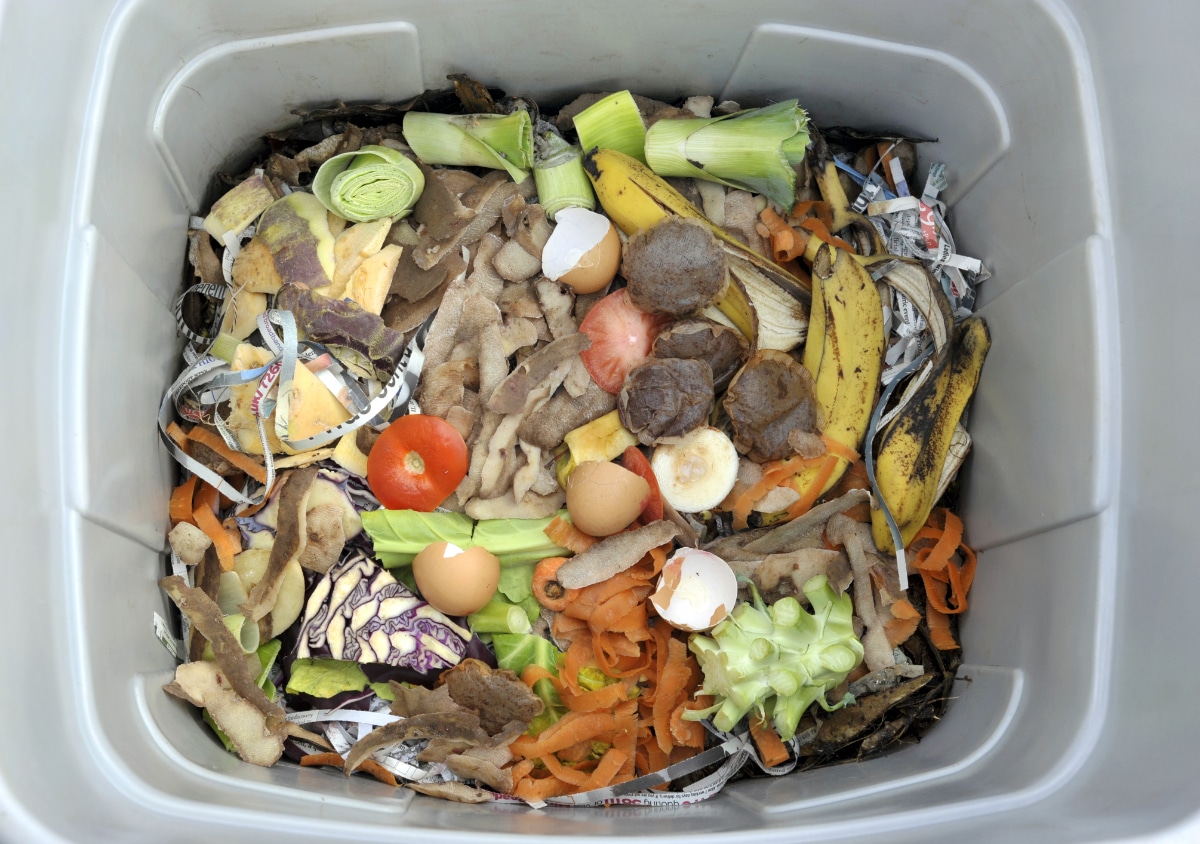
Vermiculture is basically worm farming. Some gardeners will keep a small colony of worms as a method of composting or to build up a strong colony of the beneficial garden-dwellers to add to and improve their soil.
If you are into vermiculture, you should be into eggshells, too. Eggshells help to keep the soil in balance and reduce acidity—high soil acid content can be harmful to earthworms. They also provide grit for the worms, which is important for their digestive system. As the worms digest the shells, they aid in their breakdown and make the calcium available in the soil through their castings.
For worm farms, eggshells should be added as powder. One-half cup once per month is the recommended application. You should wait to add more eggshells if it looks like there is still a significant amount in the bin.
Eggshells as Plant Fertilizer
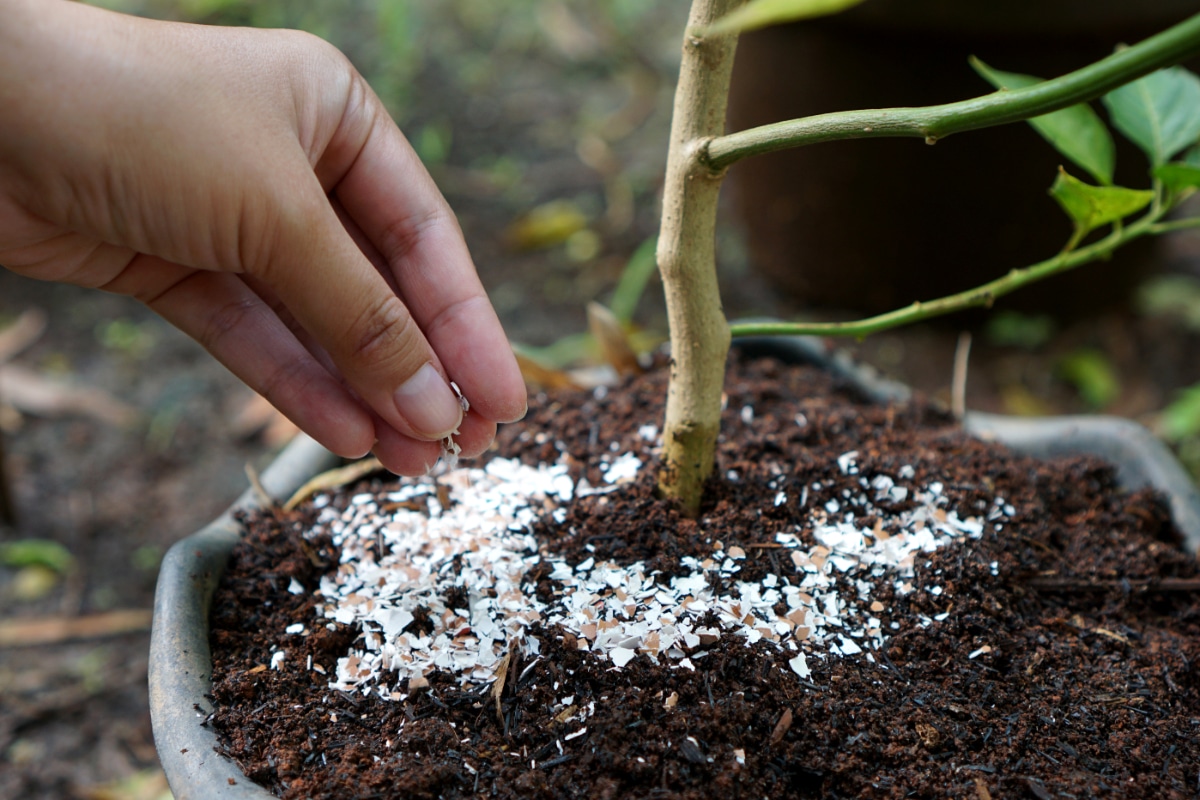
We've talked about adding eggshells as a calcium supplement for your garden soil, but it is also a fertilizer with more to offer. Eggshells contain phosphorous and potassium, too. If you do not wash the lining out of your shells, they are also a source of nitrogen. For that reason, eggshells as fertilizer are one of the few times when you might not want to wash them before use.
Instead, let the lining dry into the shells and then crush them. This can cause some odor issues if stored in the kitchen, though typically as long as the shells are dried, they do not smell too much. Another option would be to bag the saved shells and store them in a baggie in the freezer until ready to use.
Eggshell fertilizer is especially good for plants that have high calcium needs and plants that are sources of high amounts of dietary calcium. These include tomatoes, eggplants, peppers, broccoli, cauliflower, kale, chard, and spinach.
Eggshell fertilizer is best if worked at least a few inches into the ground. It can be crushed, powdered, or added to water and watered in. As an added boost for your garden, mix the eggshell powder 1:1 with used coffee grounds, which are a rich source of nitrogen.
Make a Foliar Spray or Eggshell Tea
An eggshell tea is a way to more quickly extract some of the calcium and minerals from eggshells and deliver it in a way that is faster and more available for the plant.
A foliar spray is a type of fertilizer, but one that allows for faster uptake of nutrients through leaves. You can use your eggshells to make a simple eggshell tea that can be used either for watering or applied directly as a foliar spray to more quickly enhance calcium absorption.
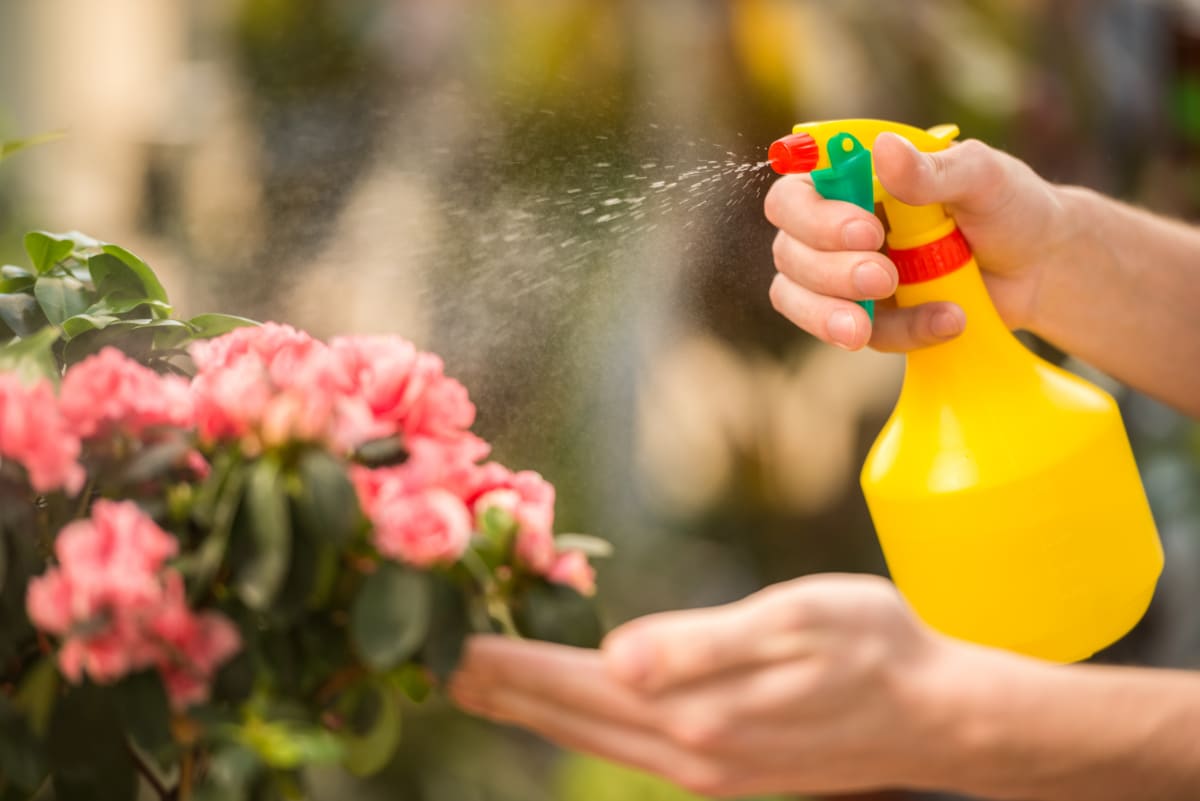
Eggshell Tea/Foliar Spray Recipe
- Rinse and dry 6 to 12 eggshells, then crumble or pulverize them into small pieces. Put them into a heat-safe bowl or container.
- Cover the eggshells in boiling water. Set aside and let steep for 24 hours.
- Strain the eggshells from the water, reserving the water (this is your "tea"). You may discard the shell bits in your compost pile.
- Use the tea to water plants, or pour the tea into a spray bottle for use as a foliar spray.
- If you are using the tea as a foliar spray, you may add several drops (about ¼ tsp) of horticultural oil to the spray bottle to help the spray adhere.
Watering with eggshell tea is helpful for seedlings and indoor plants whose soil cannot be disturbed and is difficult to amend. It is a good source of calcium and potassium and is a good booster for stressed plants.
Foliar sprays are also good to use for indoor plants if they are in need, and are good for outdoor garden plants, too. You do want to avoid spraying foliar sprays too frequently, though, because wet leaves invite disease. Apply foliar sprays when the plants are not in strong, direct sunlight and at a time when they will be able to dry without remaining wet for many hours. The morning when the sun is not at its zenith is a good time of day for foliar sprays.
Use Eggshells to Increase Soil pH

Low pH means that your soil is acidic. This is a problem for many common vegetable plants. Some plants prefer acidic soil, but many do not and will struggle unless you do something to bring the pH up and reduce your soil's acidity. Eggshells can help you do that, too!
To increase soil pH with eggshells, broadcast a generous layer of small crushed, powdered, or pulverized eggshells over the area and mix them into your soil. Work the shells several inches into the ground.
Note that the eggshells do take time to work because they take time to breakdown, but over time the acidity of the soil should improve. This is a method best suited for smaller or more localized treatment, only because it would be difficult to save enough eggshells to treat an entire garden (if you do somehow have such a resource, though, go for it!). For larger areas, lime is a more available application. Lime takes about the same amount of time to work on the acidity levels of your soil.
Eggshell Pest Control
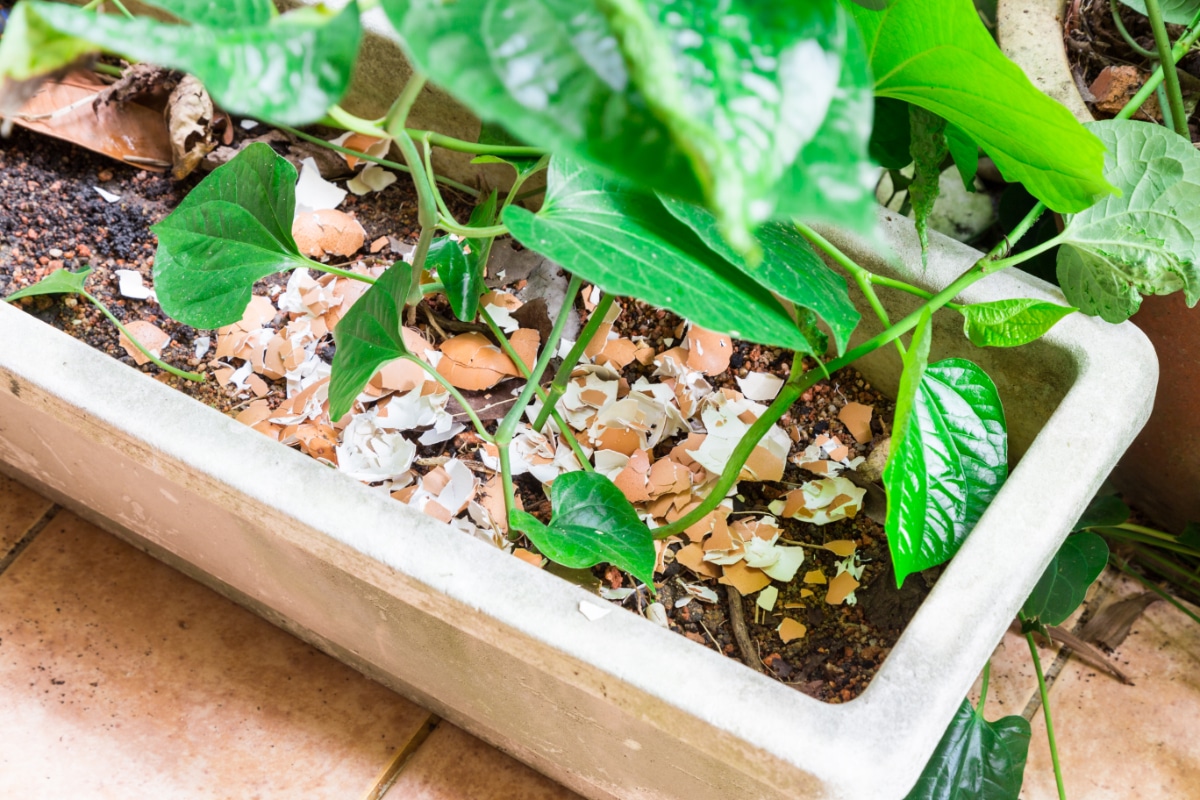
Using eggshells to control pests like cutworms, grubs, snails, and slugs falls into the category of things some gardeners swear by while others say it doesn't work. Cheap and easy as it is, coupled with the fact that eggshells are just plain good for your garden anyway, it also falls into the category of things that there is no harm in trying—and potentially, a lot of benefits.
Eggshells are said to work similarly to diatomaceous earth in the control of crawling soft-bodied pests. The coarse shells deter slugs and grubs from crawling over them and cause slicing injuries that kill them. They can be simply scattered over the surface of the ground, but the method seems more effective if you use a quantity of coarsely-crushed shells to protect specific plants (which may explain why this works better for some than others).
Lay a thick layer of coarse eggshells (1/4+ inch deep) in a closed circle surrounding vulnerable plants. The circle should be at least two inches wide to create a pathway that is not easily crossed.
Deter Problem Pets and Wildlife
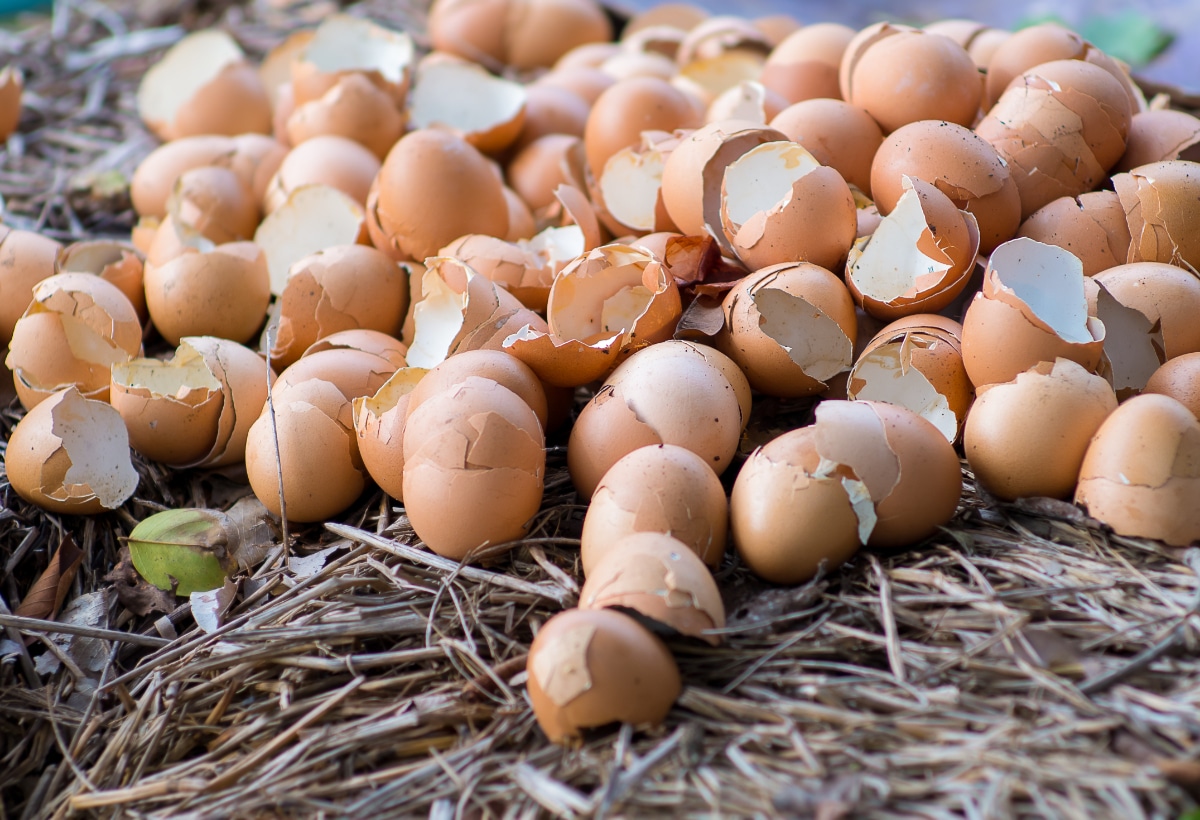
Some animals, both wild and domestic, hate the smell of eggshells. Both cats and deer are said to be turned off by the smell, so using eggshells in your garden can help.
For a more concerted effort, scatter large pieces of eggshell in and around your garden areas. Using your eggshell tea as a perimeter spray can work, too.
For a stronger smell deterrent, one that you are unlikely to notice but that sensitive smellers like deer and cats can, you may choose not to rinse your eggshells for this purpose and to leave the lining intact instead.
Besides turning their noses up at the smell, cats, in particular, do not like walking on eggshells, either, so large pieces or very coarse chunks of eggshell placed strategically in some of their more frequented areas can send them on their way.
The one drawback to this use is that the large eggshell pieces can also be inviting to rodents, so it may come down to a question of what is more crucial to control.
Eggshell Home Remedy for Itchy, Irritated "Garden Skin"
Lastly, eggshells can help you when you come back in from the garden, too. This easy eggshell and vinegar recipe can be used to treat itchy, irritated skin.
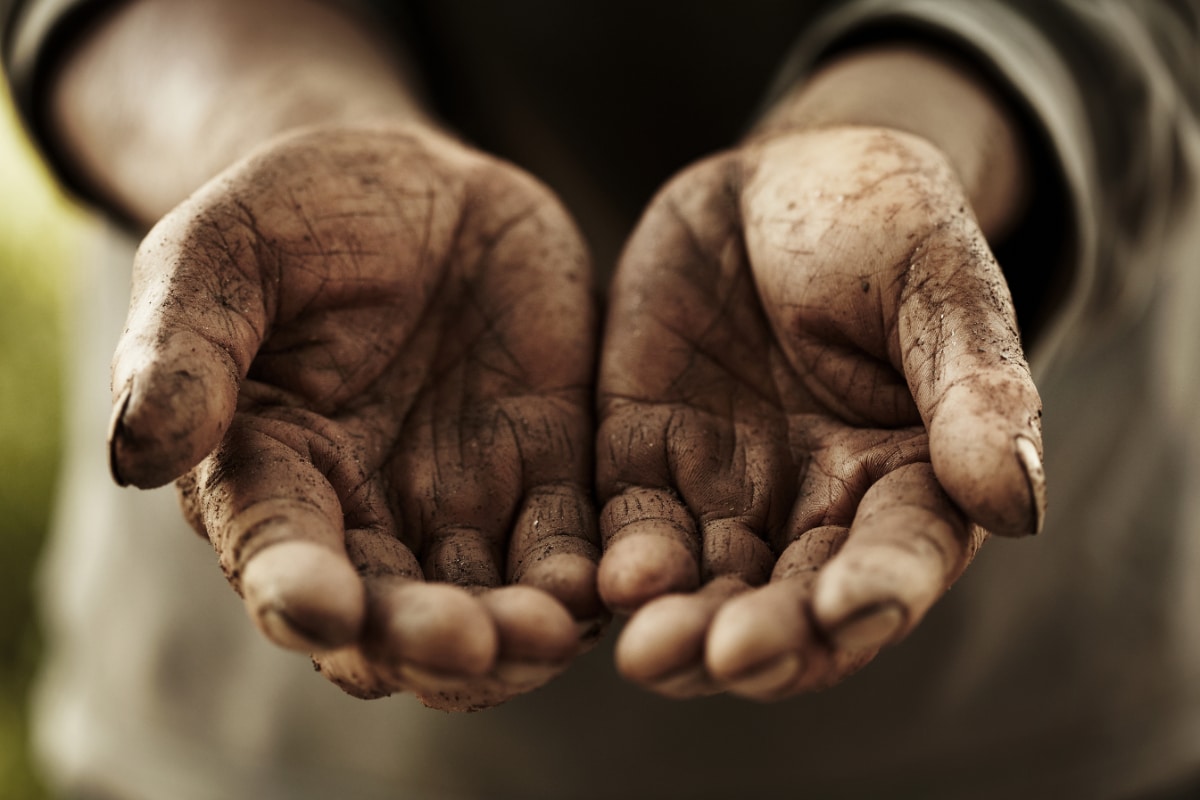
Eggshell Skin Rub
- Clean and dry two or more eggshells. Since you will apply this rub to your skin, sterilize the eggshells by drying them in a 225F oven for 15 minutes.
- Cool, then crush. A powder will work best for this purpose.
- Put the eggshells in a small jar and cover them with apple cider vinegar (ACV).
- Let the mixture sit and soak for three days. It is then ready to use.
- Stir the rub before using it and dab it on itchy, irritated skin.
As with any homemade skin remedy it is best to spot-test this rub on a small area before wider use to be sure you do not negatively react to it. Application to open skin, cuts, or sores is not advisable.
For egg lovers, eggshells are too cheap and available as a resource not to find good reuse for them. With the variety of uses listed here, you're sure to find an easy way to up your gardening game just by recycling those "incredible, edible eggs."
Do You Have To Bake Egg Shells Before Using In Garden
Source: https://gardening.org/15-fantastic-ways-to-use-eggshells-in-the-garden/
Posted by: fishcanconse.blogspot.com

0 Response to "Do You Have To Bake Egg Shells Before Using In Garden"
Post a Comment